Residents Demand Answers From Developers Of Proposed 40-Story Tower At Trump Village Shopping Center


Developer Rubin Schron’s plan to build a skyscraper in Coney Island is not going over well with residents.
More than 700 Coney Island community members filled an auditorium at Abraham Lincoln High School (2800 Ocean Parkway) Wednesday night to hear from environmental experts and developers, and to demand answers regarding the 40-story residential and commercial tower to be built on the site of the Trump Village Shopping Center, located at 520 Neptune Avenue.
The building — which would feature 544 rental units and three levels of commercial space — has long been the topic of speculation and rumor, and last night residents finally had the opportunity to raise concerns with representatives from Schron’s group, Cammeby’s International. The town hall meeting, called by Councilman Chaim Deutsch, was opened by Comptroller Scott Stringer, a vocal critic of the development.
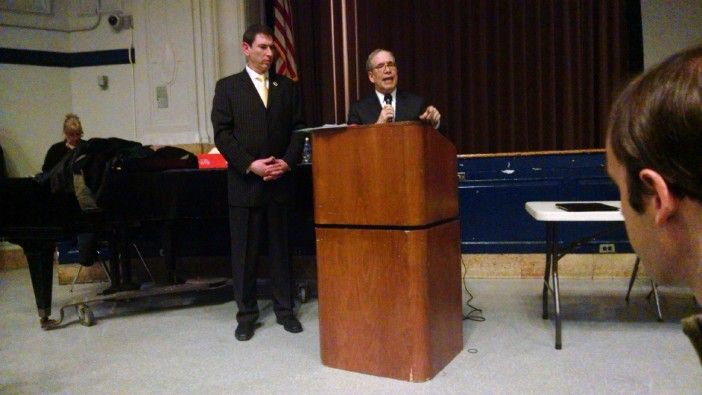
“As comptroller, it raises serious fiscal concerns to me,” Stringer said. “Because when you plop a 40-story building into a community and think that’s going to spur economic development, that’s going to create jobs, that’s going to create livability, that’s usually not the case. We need community-based planning.”
Stringer mentioned District 21’s overcrowded schools, as well as environmental contamination found at the site.
“Nothing should be built on toxic land, and as someone who pays out the claims in this city, we’re not going to let that happen,” he said.
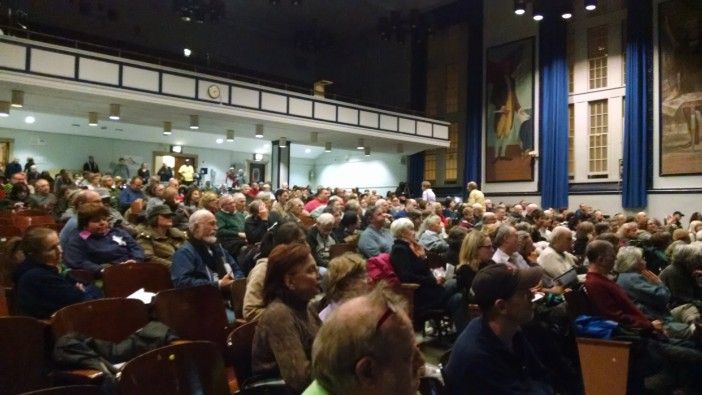
The Department of Environmental Conservation (DEC) was represented by George Heitzman, whose unit in Albany deals with manufacturing gas plant sites across the state. He noted that the DEC does not regulate proposals for construction on contaminated sites; rather, they develop remedies to safely excavate and clean up contaminants.
Heitzman relayed a brief history of the Dangman Park Manufactured Gas Plant, which operated in the location of the shopping center for nearly 100 years, from late 1800s until WWI. During that period, energy was retrieved from coal, and toxic tar waste was released directly into the ground, sinking 70 feet deep.
“It was a relatively small plant. The result of that is not a lot of contamination was discharged — in comparison to some of the much larger plants throughout the state,” said Heitzman citing the enormous toxic dump uncovered in Coney Island Creek.
The DEC is currently working with National Grid to investigate and clean up all of the sites which they, and their predecessors KeySpan, are responsible for – including the Trump Village Shopping Center and the Coney Island Creek site. Heitzman said there are several clean-up approaches, but which one they use will depend on the findings of their ongoing investigation and whether developers decide to raze the mall.
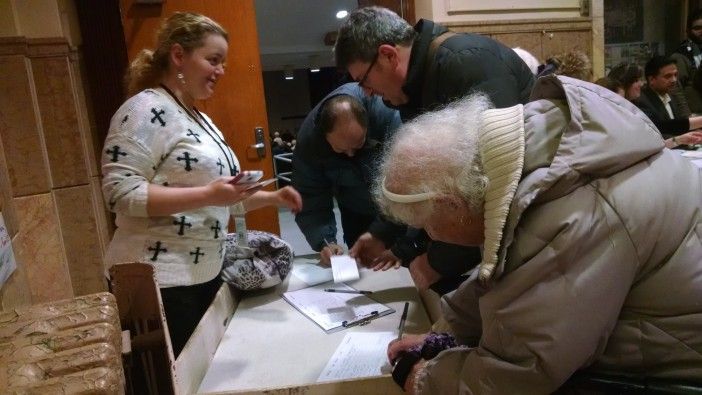
The DEC may leave the pollutants alone, sealed underground by the shopping mall, or they might go into the site and excavate the contaminated earth safely with a tent, processing air and soil before they are discharged back into the environment. Finally, the DEC may solidify the contaminated earth with a cement mixture to ensure that it does not spread or vaporize.
The DEC does not require the strip mall to be torn down in order to excavate, Heitzman said; however, if the developers decide to take down the strip mall, the DEC will make sure the area is excavated in a manner that does not cause harm to residents.
“We have done this at dozens of sites statewide, many of them in Brooklyn. We have been doing this a long time and we know how to do it right,” he added.
DEC will present detailed findings of their investigation on January 26 at 6pm, at Lincoln High School, including charts and a more specific excavation plan. Once again, transportation from nearby housing complexes will be provided.
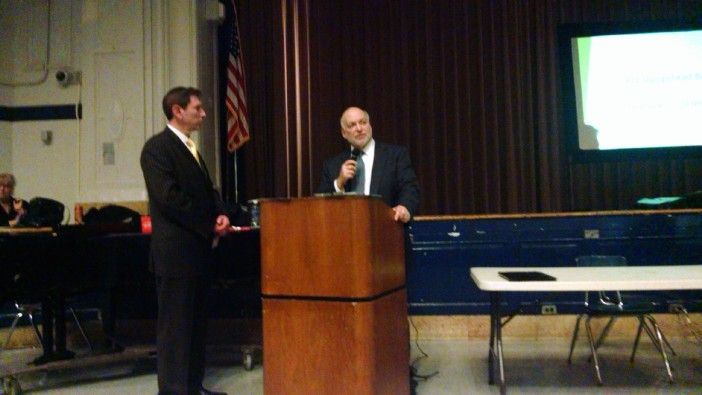
Dennis Hasher, counsel for Cammeby’s International, took the podium next, prompting jeers from the audience. He told residents that Cammeby’s — which owns many of the Trump buildings — is a family business, and that the owners reside in and care for the neighborhood’s wellbeing.
Hasher argued that the development would invest $450 million into an underutilized area, spurring $1 billion in economic growth, and boosting the market values of neighboring co-ops. He denied Stringer’s claim that District 21 schools were overcrowded, saying they were actually at 89 percent capacity.
Hasher added that the tower would be built with storm resiliency in mind, above sea level and with reserve tanks to contain flood waters.
“When the floods came, devastated the neighborhood, the shopping center was under water; cars were floating away. Our building — our commercial building, our residential building — is designed to be storm proof,” Hasher said.
A main concern has been the removal of the shopping center — which includes a CVS, a dry cleaner, a post office, and a Walgreens supermarket — leaving the neighborhood’s mostly elderly population without access to these essential services.
Hasher referenced Cammeby’s International recent purchase of a bath house located at 614 Sheepshead Bay Road — down the block from Trump Village — for $18.1 million, which will be developed into commercial space for many of the displaced businesses. He also said the Neptune Avenue building would also include a doctor’s office, guaranteeing residents access to health services.
During the Q&A session that followed, residents raised various concerns about the neighborhood’s seniors, the impact on local schools, loss of sunlight and views for nearby apartments, noise pollution, and parking.
Regarding parking, Hasher said that the plan includes a multi-tier parking facility, which would provide approximately 750 spots. Currently, the shopping center’s parking lot holds 250 spots.
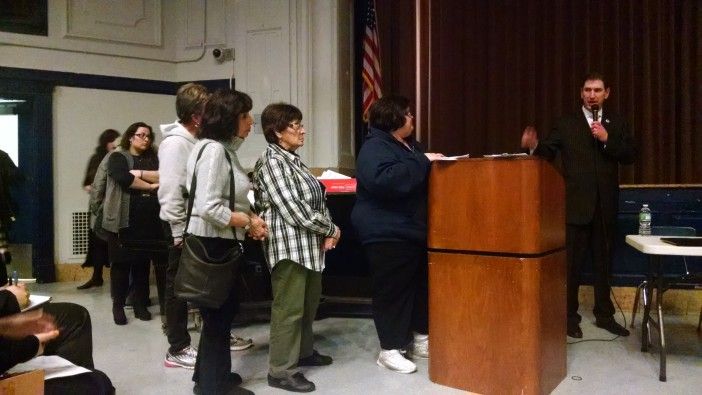
Neighbors did not appear to be satisfied with Hasher’s answers.
“Bullshit!” yelled one resident. “Will the parking be for the community?” demanded another.
“This building, it looks like Manhattan to me. You should go to Manhattan and build this building. You want to make money? Go to Manhattan!” declared Vitaly Slobodskoy, a board member at Warbasse Houses, prompting cheers and whistles from the audience. “Here are my parents. Here are people who need their medicine.”




